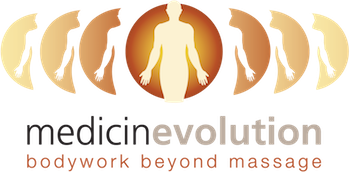Living with fibromyalgia means navigating a complex landscape of chronic widespread pain, persistent fatigue, sleep disturbances, and often, cognitive challenges known as “fibro fog.” It’s a condition that can significantly impact daily life, leaving many searching for effective strategies to manage symptoms and improve their quality of life. Among the various complementary therapies explored, massage often comes up – but with heightened pain sensitivity (allodynia and hyperalgesia) being a hallmark of fibromyalgia, is it actually helpful, or could it make things worse?
The answer often lies in the type and application of massage. While deep, intense pressure might trigger a flare-up for many, gentle, skilled massage techniques can offer surprising relief for some individuals with fibromyalgia.
Understanding Fibromyalgia Pain & Touch Sensitivity
One of the primary challenges in fibromyalgia is an altered pain perception process. The central nervous system seems to amplify pain signals, meaning stimuli that wouldn’t normally be painful can cause discomfort (allodynia), and painful stimuli can feel much more intense (hyperalgesia). This is why the idea of massage might seem counterintuitive. Aggressive techniques could easily overwhelm the nervous system and worsen pain and fatigue.
However, gentle touch, applied correctly, may work differently.
How Gentle Massage Might Help Soothe Fibromyalgia Symptoms
Instead of aggressive manipulation, therapeutic massage for fibromyalgia focuses on calming the nervous system and gently easing muscle tension. Here’s how it might help:
- Pain Modulation: Gentle techniques may stimulate nerve fibers that can help “close the gate” on pain signals traveling to the brain, potentially offering temporary relief.
- Muscle Relaxation: Fibromyalgia often involves tight, tender muscles. Light, soothing strokes can help ease this tension without causing further irritation.
- Stress Reduction & Nervous System Balance: Gentle massage promotes relaxation, helping to shift the body from the “fight-or-flight” (sympathetic) state to the “rest-and-digest” (parasympathetic) state. Lowering stress hormones like cortisol can positively impact pain perception and overall well-being.
- Improved Sleep Quality: By promoting relaxation and reducing pain, regular gentle massage may contribute to better, more restorative sleep – something crucial for managing fibromyalgia fatigue.
- Enhanced Body Awareness: Gentle touch can help individuals reconnect with their bodies in a positive, non-threatening way.
- Mood Boost: Massage can stimulate the release of endorphins (natural mood lifters) and create a sense of being cared for, which can combat the anxiety or depression that sometimes accompanies chronic illness.
Which Massage Techniques Are Often Better Tolerated?
Not all massage is created equal, especially for fibromyalgia. Techniques often found beneficial include:
- Modified Swedish Massage: Using long, gliding strokes with light, consistent pressure.
- Myofascial Release (Gentle): Applying sustained, gentle pressure to stretch the fascia (connective tissue) can help ease restrictions and pain.
- Craniosacral Therapy (CST): A very light-touch therapy focusing on the membranes and fluid surrounding the brain and spinal cord, aimed at calming the nervous system.
- Lymphatic Drainage: Extremely gentle techniques aimed at improving lymph flow, potentially reducing swelling and aiding detoxification.
Communication is Key
The most critical factor for a successful massage experience with fibromyalgia is open communication with a knowledgeable therapist.
- Before you start: Discuss your diagnosis, symptoms, tender points, and any areas that are particularly sensitive or off-limits.
- During the session: Provide real-time feedback on pressure and comfort. What feels good one day might not the next. A skilled therapist experienced with fibromyalgia will understand this and adjust accordingly.
- Find the right therapist: Look for practitioners who explicitly state experience working with chronic pain conditions like fibromyalgia. At Medicine Evolution, our therapists understand the nuances of conditions like fibromyalgia and prioritize your comfort and therapeutic goals.
Massage as Part of Your Integrated Plan
Gentle massage therapy isn’t a cure for fibromyalgia, but for many, it can be an incredibly valuable part of a comprehensive management strategy. When combined with appropriate medical care, gentle movement, stress management techniques, and potentially nutritional support (areas often explored in functional medicine), massage can contribute significantly to improving day-to-day comfort and overall quality of life.
If you’re living with fibromyalgia and wondering if gentle massage could help you manage flare-ups and find relief, we encourage you to reach out. Discuss your situation with the MedicinEvolution massage therapists to see if this approach might be right for your unique needs.






